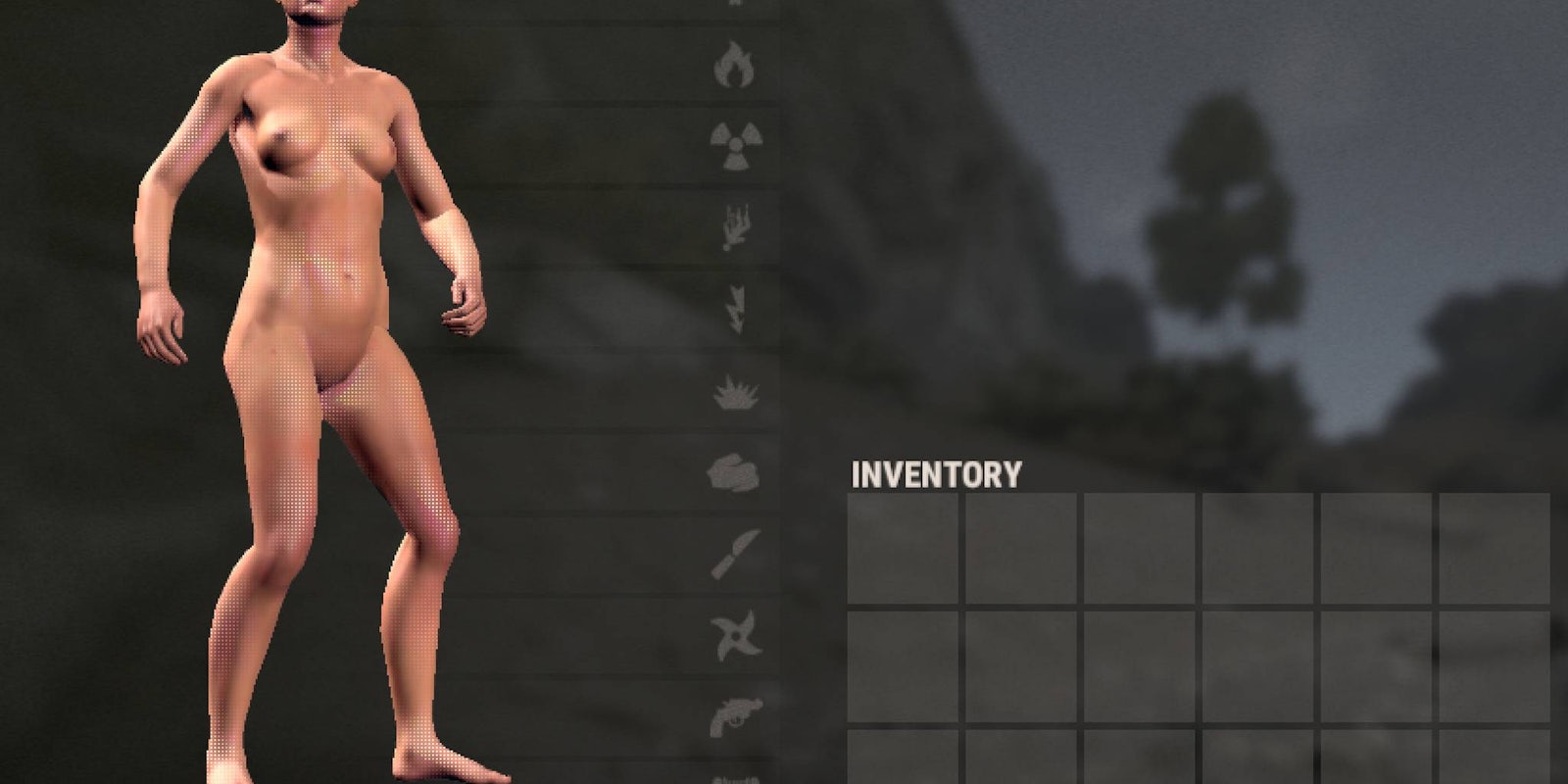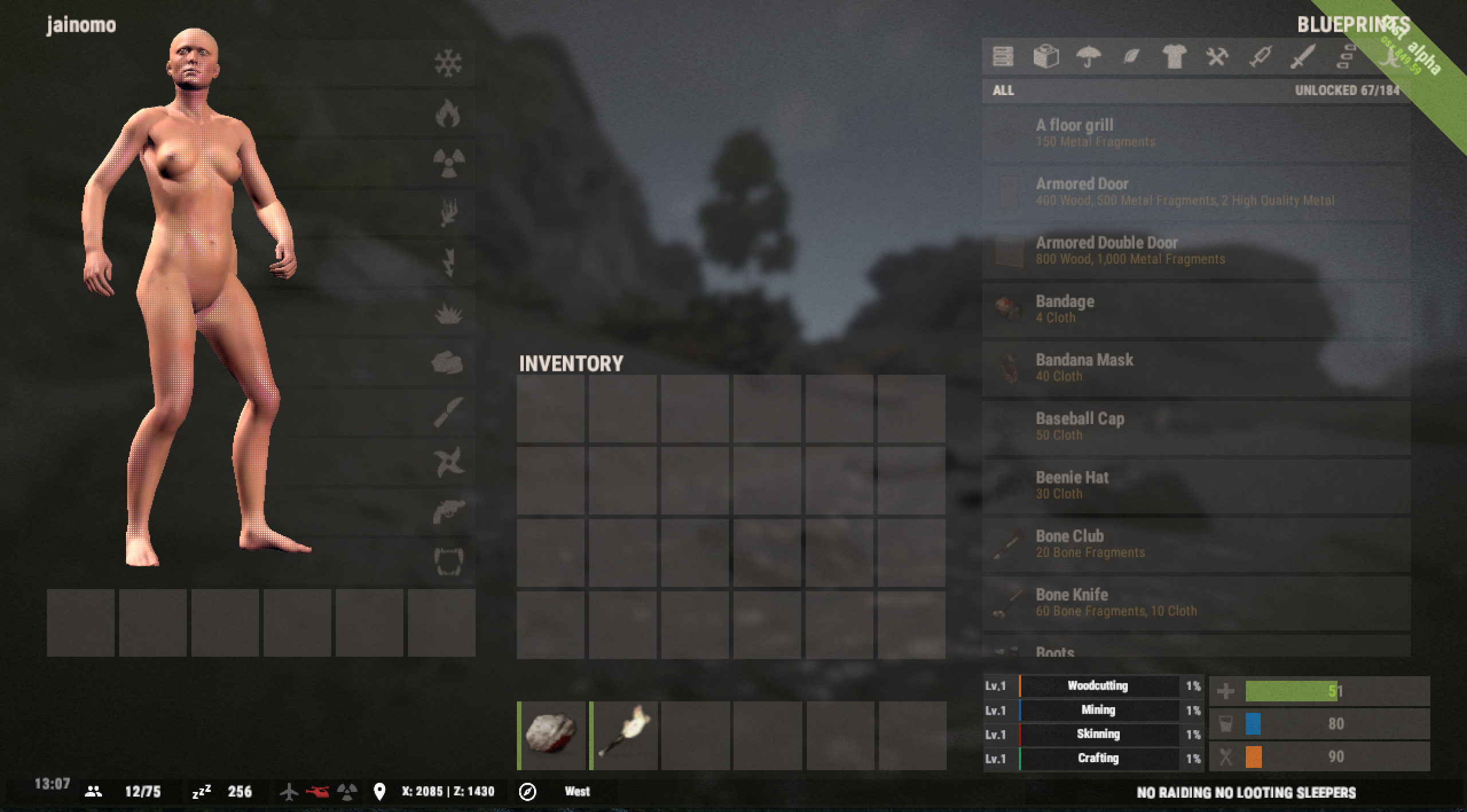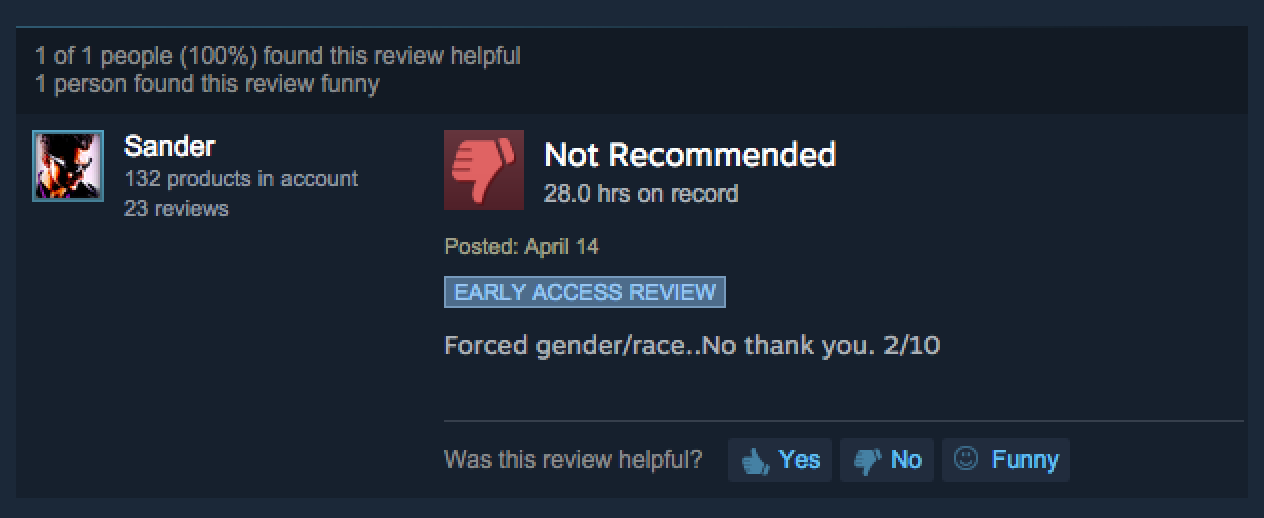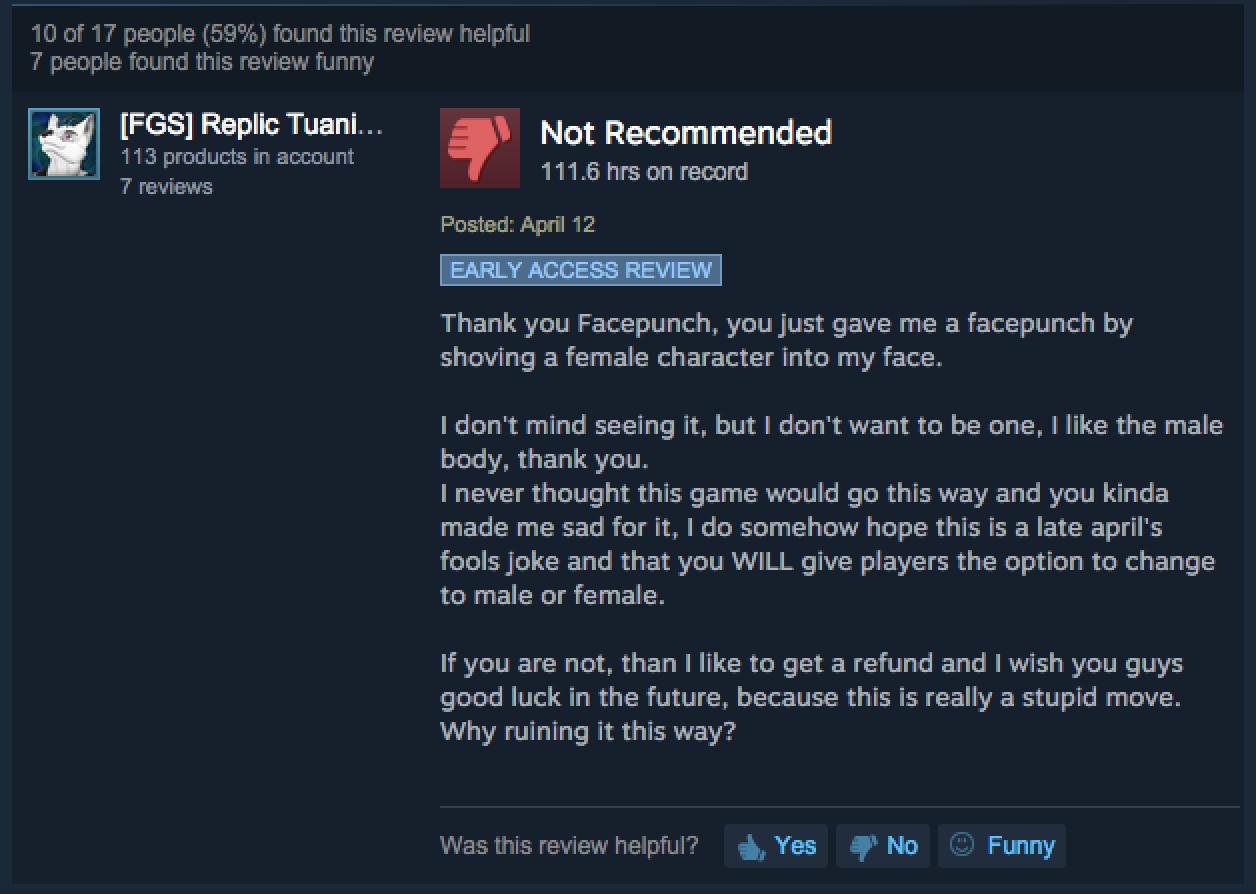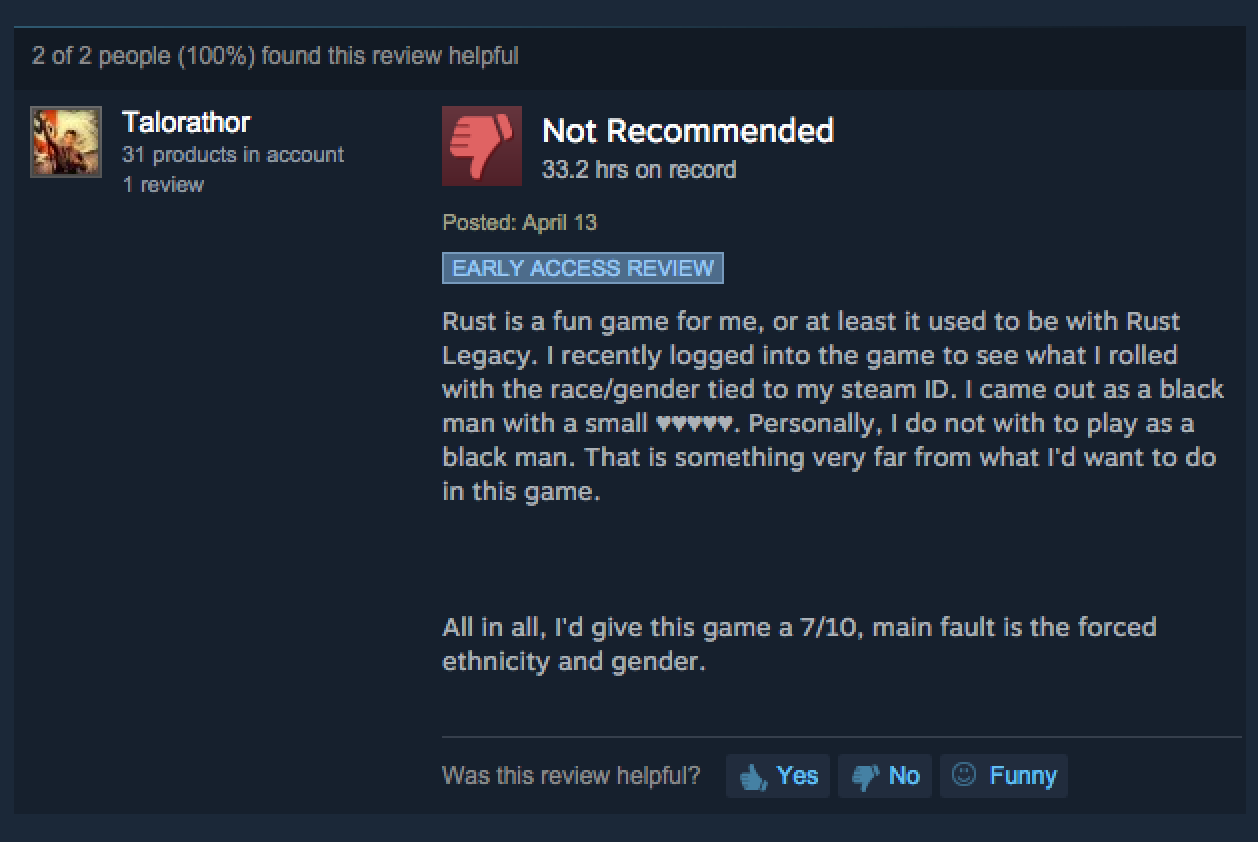Imagine waking up in a strange place. No hair on your head, no clothes on your back. Also, you’re a black woman now.
That’s the idea behind the latest update to Rust, a multiplayer online survival game from Facepunch Studios. The game now randomly assigns each player a fixed race and gender that’s tied to their Steam ID. No matter what you do, it cannot be changed. To test it out, I downloaded Rust and uncovered my own avatar:
Well, not much variety there.
Some people, like myself, might open up the game to find our race and gender staring back at us, while others may end up looking completely different and unable to do anything about it. It’s a really smart move on the part of the studio. Not only does it mean they don’t have to create a player customization option, which developer Garry Newman said could take up to six months to make, but there’s now an equal number of male and female players, as well as improved diversity.
This decision has seen some flack online, with some people saying they don’t want to play as a race or gender they don’t identify with. It’s been mostly men accusing Facepunch Studios of pushing a feminist agenda, although there has also been pushback from the transgender community, who see it as a reminder of real-world transphobia.
Newman wrote an opinion article in The Guardian this week addressing the concerns around his game. While he emphasized with the transgender community, saying avatar assignments are random and not meant to imply gender is fixed, he largely dismissed the male gamers. What’s their big concern? They don’t want to play as a character who doesn’t look like them.
Welcome to our world.
For the past couple of decades, video games have largely been made and marketed with male players in mind, especially young white men. This is not necessarily an ideological position, it’s simply market research and business tactics. Women and people of color have always been playing video games, they just weren’t the right audience at the right time, so for years they were stuck playing the market’s pick for optimal audience growth. Newman wrote that many women have thanked him for automatically assigning race and gender to players, because it’s giving male players a chance to experience what they’ve had to for years.
“It’s maybe understandable why some male gamers wouldn’t want to play as women. They’re just not used to being forced to,” Newman wrote. “Female gamers are obviously more forgiving—they’ve been playing games as men for most of their lives.”
Nowadays, women and people of color are flooding the market, especially in PC and mobile gaming, so the market has slowly improved its response. More games are doing dual protagonists, and upcoming releases like Mirrors Edge: Catalyst and Horizon: Zero Dawn are giving us unique female protagonists. But that doesn’t change the fact that the market is still predominantly focused on the male experience. After all, during last year’s E3 convention, about one-third of presented video games had a male protagonist, while 9 percent had a female one.
One of the most celebrated female-led video games of 2015 was even discouraged from having a woman in the first place. Life is Strange’s developer team Dontnod Entertainment said multiple studios told them to make teenage protagonist Max a man. It’s one of the main reasons why they went with Square Enix, which made no such demand.
Let’s not ignore the racial breakdowns either. A study of games between 2007 and 2012 showed that two-thirds of main characters were white. Of course this may not be generally reflected in recent releases, with games like Grand Theft Auto V and Telltale Games’ The Walking Dead series, but even nowadays characters still largely default to being white.
Call of Duty: Black Ops 3 only let you choose between a series of white avatars, because that’s what the actors were. Uncharted 4: A Thief’s End features a black character voiced by a white actress. Quantum Break gave us a white male protagonist and supporting cast that was predominantly white, with the exception of the amazing Lance Reddick. And Hardcore Henry, the first video game-style first-person film, is told through the eyes of a white man rescuing his kidnapped wife.
When your market is heavily weighted in favor of one specific group, all the other groups have to simply play along or get out of the game.
None of these characters are bad because they are white or male, and none of these individual games or films are bad for having characters that are white or male. It’s about volume. When your market is heavily weighted in favor of one specific group, all the other groups have to simply play along or get out of the game. All it takes is one video game shining a light on that hypocrisy for thousands of white male players to finally get what everyone else has been unhappy about.
Rust’s market isn’t catering to them anymore, because it isn’t catering to any of us. And that’s simply amazing. This model should be reflected in future games, both single and multiplayer, to continue giving these players a taste of the medicine everyone else has been swallowing for years. In the meantime, it would also be great to see Rust’s features and skin colors improved in future updates, with more shades to increase diversity.
If there are any guys who don’t like it, tough. It’s our world now.
Beth Elderkin is a freelance journalist who’s been featured in TouchVision, Daily Dot, PopOptiq, The Gloss and several other publications. She also co-hosts and produces Shark Jumping, a TV review series for Channel Awesome. Follow her on Twitter @BethElderkin.

